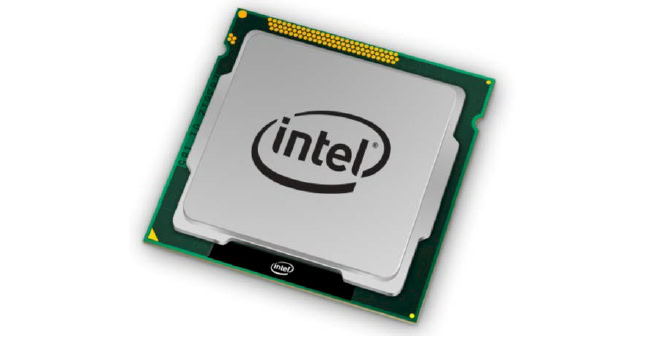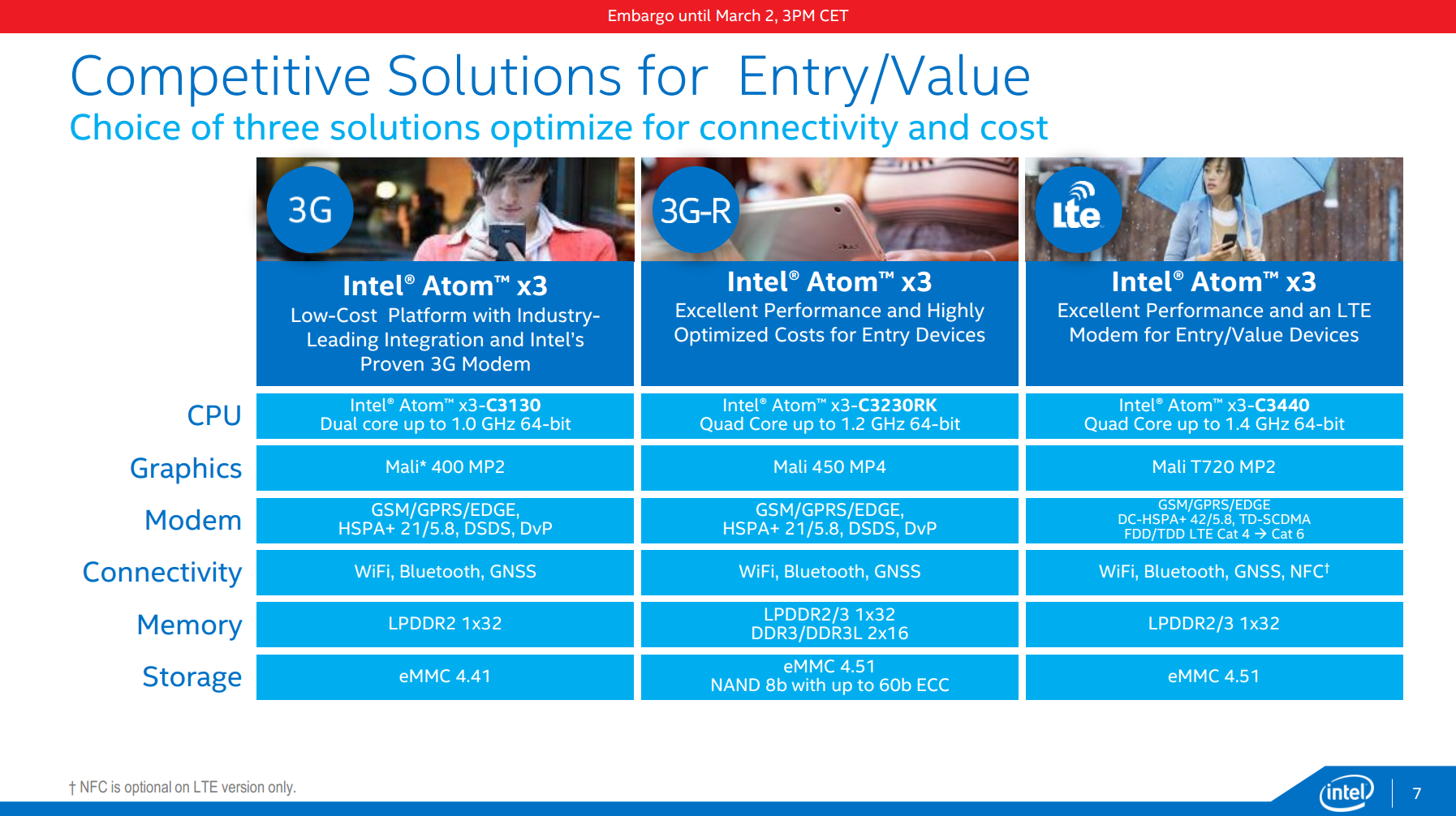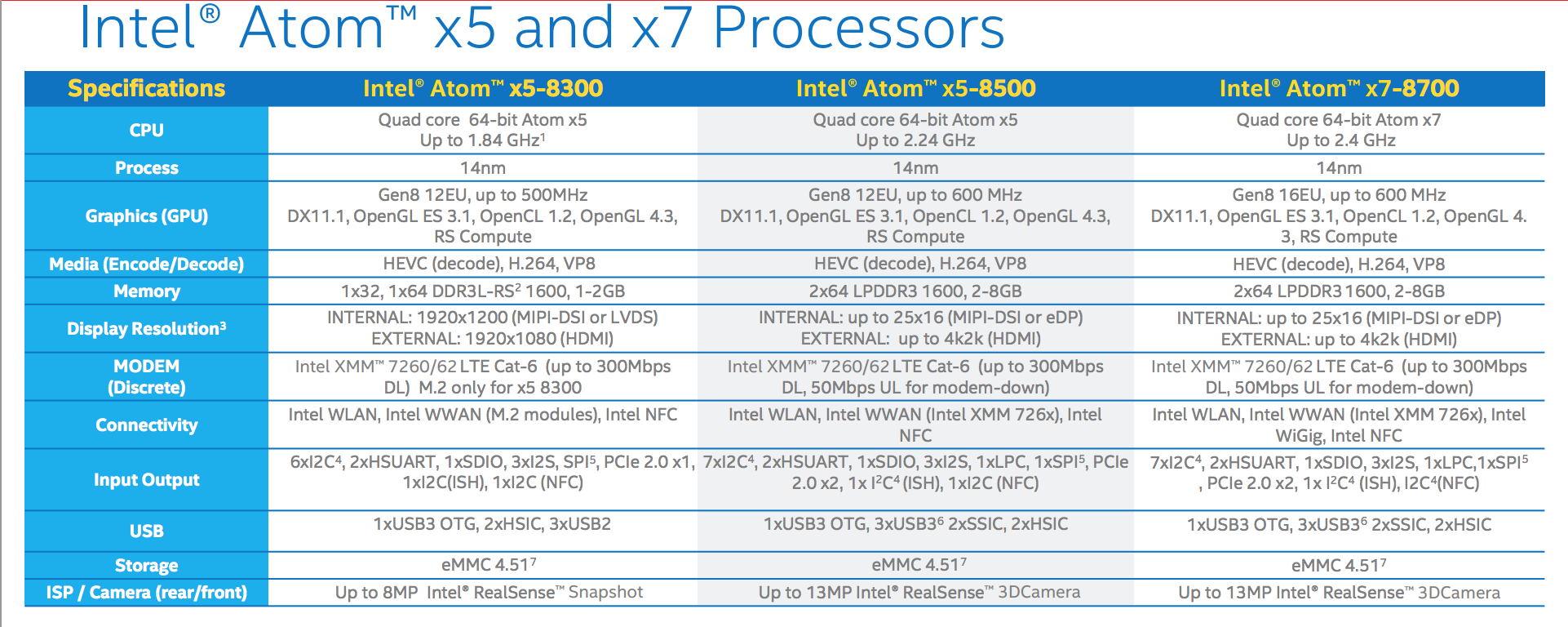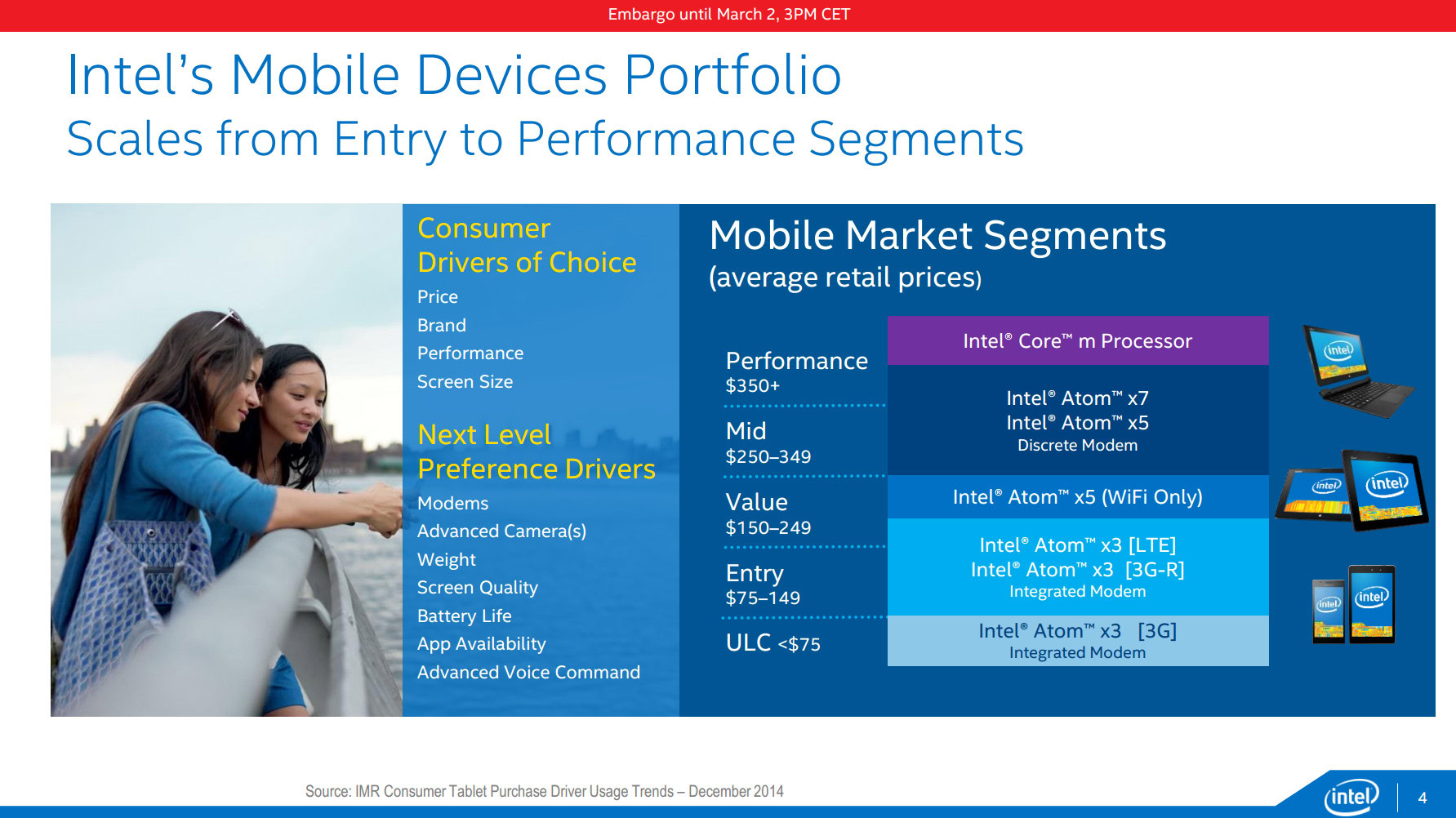Affiliate links on Android Authority may earn us a commission. Learn more.
Intel unveils Atom x3, x5 and x7 SoCs for mobile

Still struggling to find its way into the mobile market, Intel has announced its Atom x3, x5, x7 SoCs for the smartphone and tablet markets. The new, simplified name tags should also hopefully help sort out Intel’s often confusing line-up of names and numbers.
As the naming scheme implies, the series begins with the low-end Atom x3, a re-branding of its integrated LTE and 3G SoFIA chips. Interestingly, the Atom x3 isn’t being built by Intel, but is rather being put together by a separate foundry, almost certainly Rockchip, using a 28nm process. Three chips fall under the x3 branding. The C3130 features a dual-core CPU, ARM Mali-T400 MP2 GPU and 3G modem. The C3230RK which is a quad-core 3G chip with Mali-T450 MP4 GPU, and the leading quad-core C3440 features a Mali-T720 MP2 GPU and integrated LTE modem. The x3 range is pegged for release in low-cost Asian markets very soon.

Moving on, the x5 and x7 series are Intel’s first 14nm Cherry Trail mobile processors, both built from Intel’s Airmont CPU design. So much for avoiding the naming confusion. These SoCs will feature Intel’s high-end Gen 8 HD graphics, which should provide a big leap in performance over Intel’s previous mobile chips. Unfortunately, not a lot of detail was given as to what separates the x5 from the x7, other than 12 and 16 graphics execution units in the respective chips.

The Atom x5 and x7 SoCs don’t come with integrated data solutions, but will play nicely with Intel’s LTE MM276x modem, which supports Cat-6 speeds and carrier aggregation. These two chips will be aimed at the tablet market, leaving Intel without a high-end smartphone chip for the time being. However, the company will have something to announce in that regard in the future.

Battery performance is likely to be the big issue for Intel, and with Samsung already at 14nm and Qualcomm’s Snapdragon 820 destined to reach 16 or 14nm by the end of the year, Intel’s manufacturing advantage is beginning to disappear. Based on previous roadmaps, the Atom x3 should appear in products in the first half of this year, while the x5 and x7 are more likely to arrive in the second half of 2015.